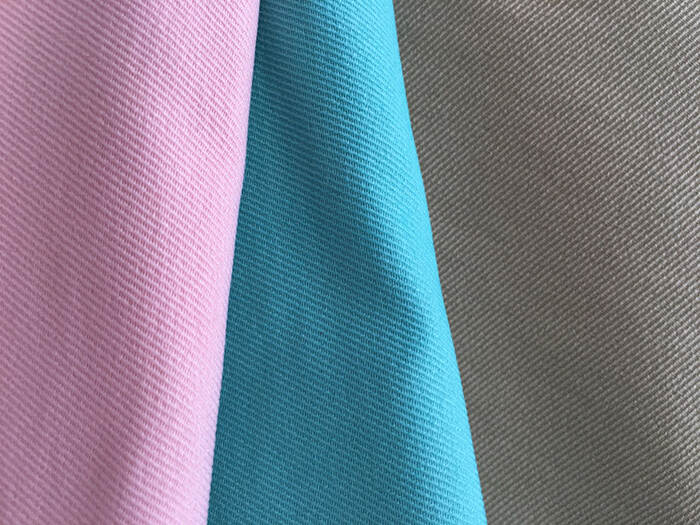10S Cavalry oblique Luo satin

Grosgrain fabric is often available in black and rarely in other colors except when it is made into grosgrain ribbons. In this case, it then comes in all flashy colors and patterns. It has little luster and is not as extravagant and flashy as other types of fabric, but it is guaranteed to be firm, strong, and close-woven.
HOW IS GROSGRAIN PRODUCED?
Unlike other ribbons that are created with abecedarian weaving techniques, Grosgrain ribbons go through a unique process called the 'taffeta weave' that weaves both thick and thin cords alternately. This particular technique gives them their signature thick woven edge that assures durability, strength, and versatility. It is also made with a heavy weft, which gives it its matte finish.
WHAT SETS IT APART FROM SATIN?
Grosgrain is quite similar to satin, which is exactly why it became a popular alternative. Both are perfect for embellishments and decorative purposes, especially on sashes, embroidery, garlands, and the like. However, some features set the two of them apart:
Grosgrain has little lines if observed closely.
Instead of a glossy finish like satin, grosgrain is characterized by a matte finish.
Grosgrain is woven via a taffeta weave, whereas satin is made with a 'single-faced' weave.
Grosgrain is far more sturdy than satin because of its weaving technique.
Satin may sometimes need an additional layer of grosgrain to add to its reinforcement.
Grosgrain is made of cotton, fiber blends, and polyester, while satin is often made of nylon.
Grosgrain is characterized by thick horizontal fibers that provide ease during edging and trimming.
Unlike satin, it is not prone to damage and can be washed, folded, heat-sealed, stitched, and go through harsh heat treatments and remain the same.
